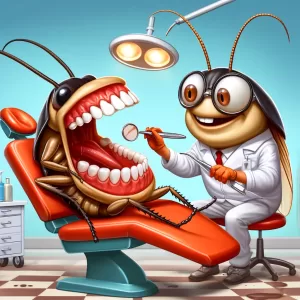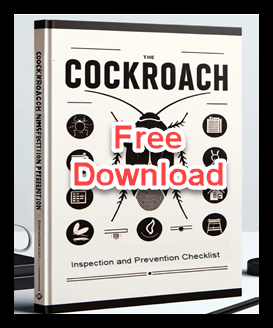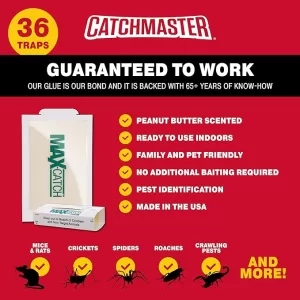 Cockroaches are fascinating creatures with many unique features, but one question that often arises is whether they have teeth. Understanding the anatomy of cockroaches, including their mouthparts, can provide insights into how they feed and survive. In this article, we’ll explore the structure of cockroach mouthparts, how they function, and the role they play in the cockroach’s daily life.
Cockroaches are fascinating creatures with many unique features, but one question that often arises is whether they have teeth. Understanding the anatomy of cockroaches, including their mouthparts, can provide insights into how they feed and survive. In this article, we’ll explore the structure of cockroach mouthparts, how they function, and the role they play in the cockroach’s daily life.
Cockroach Mouthparts: An Overview
Mandibles Instead of Teeth
Cockroaches do not have teeth like humans or other mammals. Instead, they have mandibles, which are strong, jaw-like structures used for chewing and grinding food. These mandibles function similarly to teeth but are more specialized for the cockroach’s dietary needs.
Components of Cockroach Mouthparts
- Mandibles: These are the primary chewing structures. They are strong and serrated, allowing cockroaches to tear and grind various types of food.
- Maxillae: These assist the mandibles in manipulating and chewing food. They also have sensory palps that help the cockroach taste its food.
- Labrum: This is the upper lip that helps hold food in place while the mandibles work.
- Labium: This acts as the lower lip and also has sensory palps that aid in tasting and manipulating food.
How Cockroaches Eat
Feeding Process
Cockroaches are omnivorous scavengers, meaning they eat both plant and animal matter. Their mandibles are powerful and capable of breaking down a wide range of food sources, including:
- Organic Matter: Decaying plant and animal material.
- Starches and Sugars: Found in human food scraps.
- Other Insects: Occasionally, cockroaches may eat smaller insects.
Chewing and Digestion
The mandibles tear and grind the food into smaller pieces, which are then mixed with saliva. This process begins the breakdown of food, making it easier for the cockroach to digest. The maxillae and labium help manipulate the food, ensuring it is adequately processed before swallowing.
The Importance of Mandibles
Survival and Adaptation
The mandibles of cockroaches are crucial for their survival. Their ability to chew a wide variety of food sources allows them to thrive in diverse environments. This adaptability is one reason why cockroaches are so successful as a species.
Defense Mechanism
In addition to feeding, the mandibles can also serve as a defense mechanism. Cockroaches can use their strong jaws to bite if threatened, although this is relatively rare and usually not harmful to humans.
Common Misconceptions
Teeth vs. Mandibles
While the term “teeth” might be used colloquially to describe the mandibles, it is important to distinguish between the two. Teeth are found in vertebrates and are composed of enamel and dentin, while mandibles are chitinous structures found in many invertebrates, including cockroaches.
Interesting Facts
Regeneration
Cockroaches have the ability to regenerate lost limbs, including parts of their mouthparts. This regeneration capability further contributes to their resilience and survival.
Sensory Palps
The sensory palps on the maxillae and labium play a significant role in the cockroach’s ability to taste and sense its environment, aiding in the detection of food and potential threats.
While cockroaches do not have teeth, their mandibles serve a similar function, allowing them to chew and process a wide range of food. These specialized mouthparts are key to their survival and adaptability. Understanding the anatomy and function of cockroach mandibles provides insight into how these resilient pests thrive in various environments.
If you’re dealing with a cockroach infestation, understanding their feeding habits can help you manage and prevent their presence. Regular cleaning, proper food storage, and effective pest control measures are essential. For persistent infestations, consider contacting a professional pest control service for expert assistance.
 Cockroaches are fascinating creatures with many unique features, but one question that often arises is whether they have teeth. Understanding the anatomy of cockroaches, including their mouthparts, can provide insights into how they feed and survive. In this article, we’ll explore the structure of cockroach mouthparts, how they function, and the role they play in the cockroach’s daily life.
Cockroaches are fascinating creatures with many unique features, but one question that often arises is whether they have teeth. Understanding the anatomy of cockroaches, including their mouthparts, can provide insights into how they feed and survive. In this article, we’ll explore the structure of cockroach mouthparts, how they function, and the role they play in the cockroach’s daily life.
